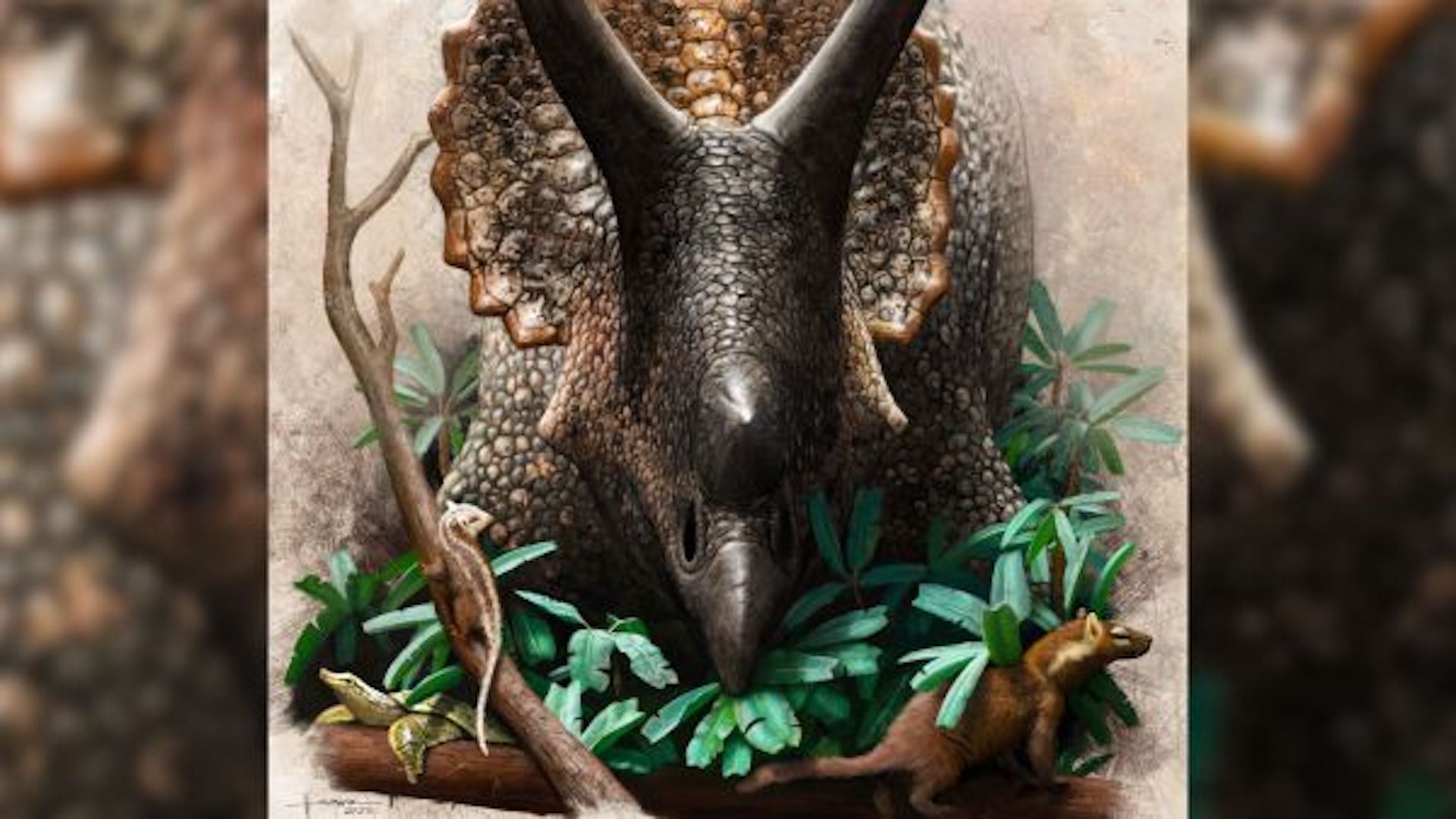Mammals were already poised to take over the world before the dino-killing asteroid struck
Ancient mammals were better adapted than nonavian dinosaurs to survive the Chicxulub asteroid impact.

Dinosaurs largely died off when a Manhattan-size asteroid slammed into Earth 66 million years ago. Meanwhile, in the shadows, tiny mammals had steadily picked up adaptations that helped them survive the disaster and thrive in its aftermath, a new study suggests.
The study, published Wednesday (Dec. 7) in the journal Science Advances, came to that conclusion by mapping the complex interactions between a huge range of ancient animals and their ecosystems before and after the asteroid hit. The model incorporates data from fossils gathered in western North America whose ages straddle the boundary between the end of the Cretaceous period (145 million to 66 million years ago) and the start of the Paleogene (66 million to 23 million years ago). These 1,600 fossils represent more than 470 genera of animals, including mammals, fish, crocodilians, birds and nonavian dinosaurs.
From the model, "the authors were able to determine that freshwater organisms and small terrestrial organisms" — including mammals — "were more resilient and better equipped to weather the extinction when compared to non-avian dinosaurs," said Thomas Cullen, a postdoctoral fellow at Carleton University in Ottawa, Ontario, who was not involved in the study. They "make a compelling case" that mammals diversified prior to the asteroid strike, rather than branching out only after the dinosaurs went extinct, Cullen told Live Science in an email.
This evolution resulted in mammals that could eat a wide variety of foods, live in a range of temperatures and weather conditions, and produce offspring quickly, so as to rapidly bounce back from sudden population crashes.
Related: What happened when the dinosaur-killing asteroid slammed into Earth?
Scientists once thought that mammal evolution exploded only as a result of the dinosaur die-off, because it left ecosystem gaps that mammals could then fill, said Gemma Louise Benevento, a postdoctoral researcher at the Senckenberg Biodiversity and Climate Research Centre (SBiK-F) in Germany who was not involved in the study. The new study adds to a growing body of evidence that mammals were already expanding into new niches before the impact, she told Live Science in an email.
Back then, the environment of the now-western U.S. would have been similar to a modern Florida swamp, co-first author Alfio Alessandro Chiarenza, a postdoctoral research fellow at the University of Vigo in Spain, told Live Science. Overall, the climate was slowly cooling toward the end of the Cretaceous, he said.
Get the Space.com Newsletter
Breaking space news, the latest updates on rocket launches, skywatching events and more!
Despite this cooling, nonavian dinosaurs didn't really adapt, the study found. Instead, they stuck to the same temperature ranges, weather conditions and diets they'd already adapted to. Thus, their ecological roles remained largely stable, except for the fact that the diversity of big, plant-eating dinosaurs decreased somewhat and their influence in the food web shrank slightly around 83.6 million to 61.6 million years ago.
During the same period mammals jumped from one "climatic niche" to another and adopted broader habitat ranges and diets, Chiarenza said. At first, this instability likely caused mammal populations to crash and rebound with the slight shifts in climate, but when the asteroid plunged the Earth into sudden cold and darkness, mammals had the flexibility to adapt. "That eventually turns out to be a great trait, when something changed so radically because of the asteroid impact," Chiarenza said.
The modeling approach used in the study was originally developed to study modern ecosystems, co-first author Jorge García-Girón, a postdoctoral researcher at the University of Oulu in Finland and the University of León in Spain, told Live Science in an email. These models are challenging to apply to ancient animals because the fossil record is incomplete and generally biased toward large specimens, but the team made an effort to account for these factors, he said.
The study's focus on U.S. fossils is another potential limitation, Cullen said. Eventually, models based on additional locations could give us a "global picture" of what happened around the end-Cretaceous extinction, Chiarenza said.
As it stands, the current model helps explain why our mammal ancestors fared so well during the so-called impact winter that followed the asteroid strike.
"It did not only amaze me how they managed to thrive in the highly complex (and probably dangerous) dinosaur-dominated ecosystems, but also how rapidly our ancestors moved into vacant niches after the asteroid hit," García-Girón said. The modeling keeps showing how "life finds a way," he said.
Join our Space Forums to keep talking space on the latest missions, night sky and more! And if you have a news tip, correction or comment, let us know at: community@space.com.

Nicoletta Lanese is a staff writer for Live Science covering health and medicine, along with an assortment of biology, animal, environment and climate stories. She holds degrees in neuroscience and dance from the University of Florida and a graduate certificate in science communication from the University of California, Santa Cruz. Her work has appeared in The Scientist Magazine, Science News, The San Jose Mercury News and Mongabay, among other outlets.










